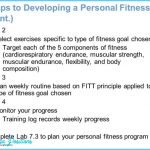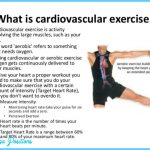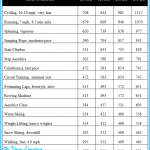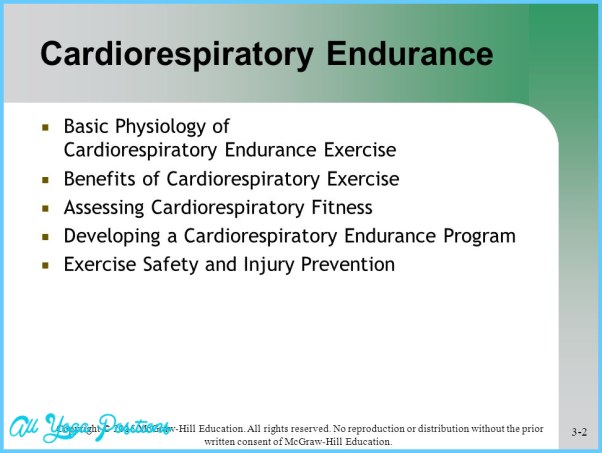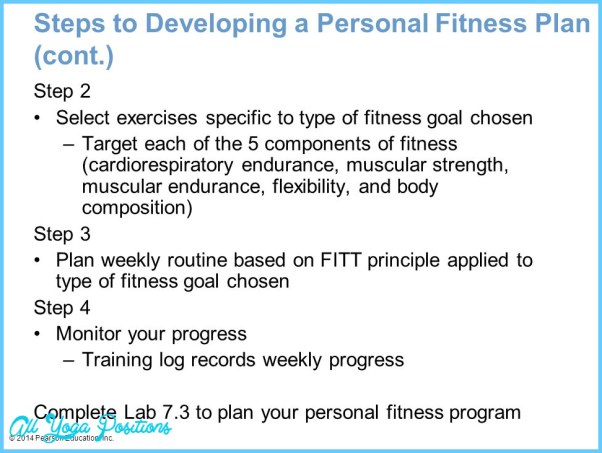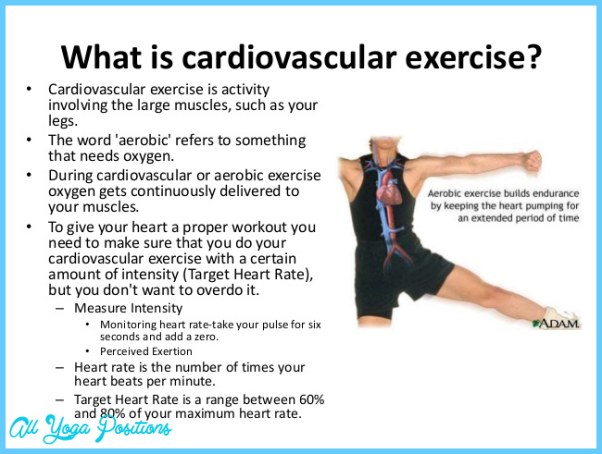DEVELOPING A CARDIORESPIRATORY ENDURANCE EXERCISES PROGRAM
Cardiorespiratory endurance exercises are best for developing the type of fitness associated with good health, so they should serve as the focus of your exercise program. To create a successful endurance exercise program, follow these guidelines:
• Set realistic goals.
• Set your starting frequency, intensity, and duration of exercise at appropriate levels.
• Choose suitable activities.
• Warm up and cool down.
• Adjust your program as your fitness improves.
DEVELOPING A CARDIORESPIRATORY ENDURANCE EXERCISES PROGRAM Photo Gallery
Setting Goals
You can use the results of cardiorespiratory fitness assessment tests to set a specific oxygen consumption goal for your cardiorespiratory endurance program. Your goal should be high enough to ensure a healthy cardiorespiratory system, but not so high that it will be impossible to achieve. Scores in the fair and good ranges for maximal oxygen consumption suggest good fitness; scores in the excellent and superior ranges indicate a high standard of physical performance.
Through endurance training, an individual may be able to improve maximal oxygen consumption (VO2max) by about 10-30%. The amount of improvement possible depends on genetics, age, health status, and initial fitness level. People who start at a very low fitness level can improve by a greater percentage than elite athletes because the latter are already at a much higher fitness level, one that may approach their genetic physical limits. If you are tracking VO2max by using the field tests described in this chapter, you may be able to increase your score by more than 30% due to improvements in other physical factors, such as muscle power, which can affect your performance on the tests.
Another physical factor you can track to monitor progress is resting heart rate your heart rate at complete rest, measured in the morning before you get out of bed and move around. Resting heart rate may decrease by as much as 10-15 beats per minute in response to endurance training. Changes in resting heart rate may be noticeable after only about four-six weeks of training.
You may want to set other types of goals for your fitness program. For example, if you walk, jog, or cycle as part of your fitness program, you may want to set a time or distance goal working up to walking 5 miles in one session, completing a 4-mile run in 28 minutes, or cycling a total of 35 miles per week. A more modest goal might be to achieve the recommendation of the U.S. Department of Health and Human Services and American College of Sports Medicine (ACSM) of 150 minutes per week of moderate-intensity physical activity. Although it’s best to base your program on “SMART” goals (those that are specific, measurable, attainable, realistic, and time frame-specific), you may also want to set more qualitative goals, such as becoming more energetic, sleeping better, and improving the fit of your clothes.


